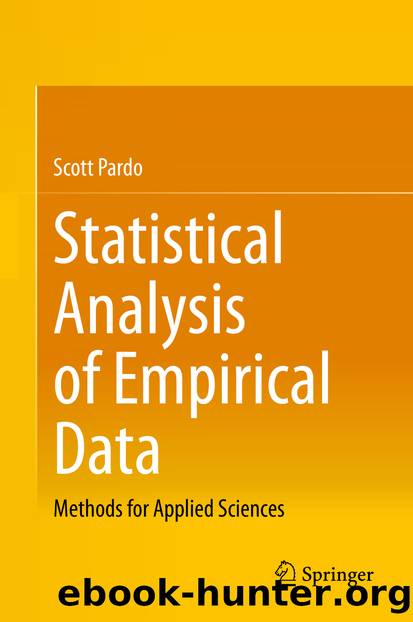Statistical Analysis of Empirical Data by Scott Pardo

Author:Scott Pardo
Language: eng
Format: epub
ISBN: 9783030433284
Publisher: Springer International Publishing
In some studies, perhaps especially observational studies, many, many variables are recorded for each experiment unit (e.g., subjects). Generally there is some interest in relating different variables to one another, and in finding a mapping that allows one to predict a response variable in terms of some subset of the potentially important explanatory, or “regressor ” variables. Without any information indicating which regressor variables are more important or better indicators for some response variable(s), the model builder is faced with the conundrum of trying to figure it out. Some of the methods described in this chapter are referred to as “machine learning” algorithms. The notion is that the analyst has limited intervention is specifying a model. Rather, she or he may select a large number of potential input variables (regressors) and then the algorithm chooses the model. In some cases, the algorithm will select a subset of the inputs as being “important,” and ultimately only include the “important” inputs in the model. Other methods will include all inputs presented to the algorithm , regardless of whether those inputs contribute a lot, a little, or not at all to the predictive accuracy. In the language of machine learning, there are two basic categories of algorithm . One is called “supervised,” and the other, oddly enough, is called “unsupervised.” Supervised algorithms require a set or sample of predictor variable values and a set of response variable values, and then attempt to find a set of rules that allows one to make a prediction of the responses as a function of the predictors. Unsupervised algorithms dispense with the dichotomy of predictor and response; rather, the unsupervised algorithm will simply take the data and then find features that could be predictable for new individuals. This chapter will deal with a few methods for choosing and selecting models, and all of them would be considered “supervised.”
Download
This site does not store any files on its server. We only index and link to content provided by other sites. Please contact the content providers to delete copyright contents if any and email us, we'll remove relevant links or contents immediately.
| Biochemistry | Biomedical Engineering |
| Biotechnology |
Whiskies Galore by Ian Buxton(40304)
Introduction to Aircraft Design (Cambridge Aerospace Series) by John P. Fielding(32332)
Small Unmanned Fixed-wing Aircraft Design by Andrew J. Keane Andras Sobester James P. Scanlan & András Sóbester & James P. Scanlan(32137)
Craft Beer for the Homebrewer by Michael Agnew(17440)
Turbulence by E. J. Noyes(7033)
The Complete Stick Figure Physics Tutorials by Allen Sarah(6632)
Kaplan MCAT General Chemistry Review by Kaplan(6045)
The Thirst by Nesbo Jo(5779)
Bad Blood by John Carreyrou(5763)
Learning SQL by Alan Beaulieu(5400)
Weapons of Math Destruction by Cathy O'Neil(5032)
Man-made Catastrophes and Risk Information Concealment by Dmitry Chernov & Didier Sornette(4730)
iGen by Jean M. Twenge(4695)
Digital Minimalism by Cal Newport;(4512)
Life 3.0: Being Human in the Age of Artificial Intelligence by Tegmark Max(4495)
Audition by Ryu Murakami(4092)
1,001 ASVAB Practice Questions For Dummies by Powers Rod(4034)
Electronic Devices & Circuits by Jacob Millman & Christos C. Halkias(4021)
Pale Blue Dot by Carl Sagan(3997)
